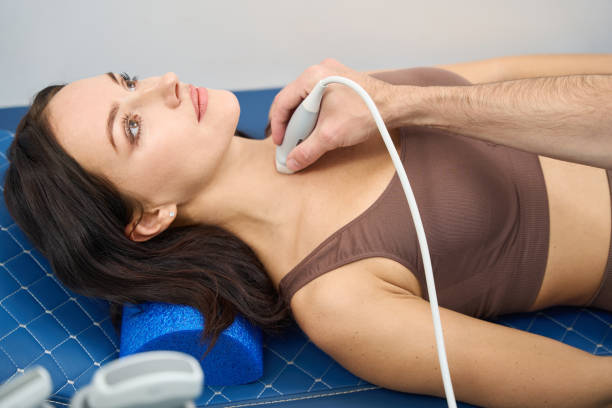Unlocking the Potential of Vibroacoustic Therapy
Is it possible that sound vibrations could be the key to unlocking profound healing and relaxation? Imagine a therapy that combines the soothing power of music with the gentle pulsations of vibration, creating a unique sensory experience that may revolutionize the way we approach wellness. Welcome to the world of vibroacoustic therapy, an innovative approach that's gaining traction in the health and wellness community.

The concept of using sound for healing isn’t new – it dates back to ancient civilizations. However, modern vibroacoustic therapy as we know it today was developed in the 1970s by Norwegian therapist and educator Olav Skille. Since then, researchers and practitioners have been exploring its potential applications in various fields of health and wellness.
How Vibroacoustic Therapy Works
During a vibroacoustic therapy session, patients are exposed to low-frequency sound waves, typically ranging from 30 to 120 Hz. These frequencies are carefully selected to correspond with the natural resonant frequencies of different body tissues and organs. As the sound waves penetrate the body, they create gentle vibrations that can be felt throughout.
The therapy works on multiple levels:
- Physical: The vibrations may help relax muscles, improve circulation, and reduce pain and inflammation.
- Psychological: The combination of music and vibration can induce a state of deep relaxation, potentially reducing stress and anxiety.
- Neurological: Some researchers suggest that the therapy might influence brainwave patterns, promoting states conducive to healing and relaxation.
Potential Benefits and Applications
While research is still ongoing, early studies and anecdotal evidence suggest that vibroacoustic therapy may offer a range of benefits:
- Pain Management: VAT has shown promise in reducing chronic pain conditions, including fibromyalgia and lower back pain.
- Stress Reduction: The deeply relaxing nature of the therapy may help alleviate stress and anxiety.
- Improved Sleep: Some users report better sleep quality after regular VAT sessions.
- Enhanced Mood: The therapy may have mood-boosting effects, potentially benefiting those with depression or mood disorders.
- Neurological Disorders: Preliminary research suggests potential benefits for conditions like Parkinson’s disease and autism spectrum disorders.
Current Research and Future Directions
The field of vibroacoustic therapy is still in its infancy, with ongoing research exploring its efficacy and potential applications. A 2019 systematic review published in the journal Healthcare found that VAT showed promise in managing pain and promoting relaxation, but called for more rigorous studies to establish its effectiveness conclusively.
Current research is focusing on several key areas:
- Optimizing Frequencies: Scientists are working to determine the most effective frequencies for different health conditions.
- Neuroimaging Studies: Researchers are using brain imaging techniques to understand how VAT affects neural activity.
- Combination Therapies: Exploring how VAT can be integrated with other treatments for enhanced outcomes.
As technology advances, we may see more sophisticated VAT devices that can tailor frequencies to individual needs, potentially opening up new avenues for personalized treatment.
Integrating Vibroacoustic Therapy into Holistic Wellness
While vibroacoustic therapy shows promise, it’s essential to view it as part of a holistic approach to health and wellness. It’s not a miracle cure but rather a tool that can complement other healthy lifestyle practices. For those interested in exploring VAT, it’s crucial to consult with healthcare professionals and seek out qualified practitioners.
Vibroacoustic Therapy: Fascinating Facts and Practical Tips
• The human body is composed of up to 60% water, making it an excellent conductor for sound vibrations.
• Some VAT devices allow users to input their own music, combining personal preferences with therapeutic vibrations.
• VAT sessions typically last between 20 to 40 minutes, with some people reporting benefits after just one session.
• The therapy is generally considered safe, but individuals with pacemakers or in the first trimester of pregnancy should consult a doctor before trying VAT.
• At-home VAT devices are becoming more widely available, allowing for regular self-administered sessions.
As we continue to explore the intricate connections between sound, vibration, and health, vibroacoustic therapy stands out as a fascinating frontier in wellness. While more research is needed to fully understand its potential, the therapy offers a unique, non-invasive approach to promoting relaxation and potentially addressing various health concerns. As with any emerging therapy, it’s essential to approach VAT with an open mind, grounded in scientific skepticism and guided by professional advice. The harmonious blend of ancient wisdom and modern technology in vibroacoustic therapy may just be the symphony our bodies have been waiting to hear.





